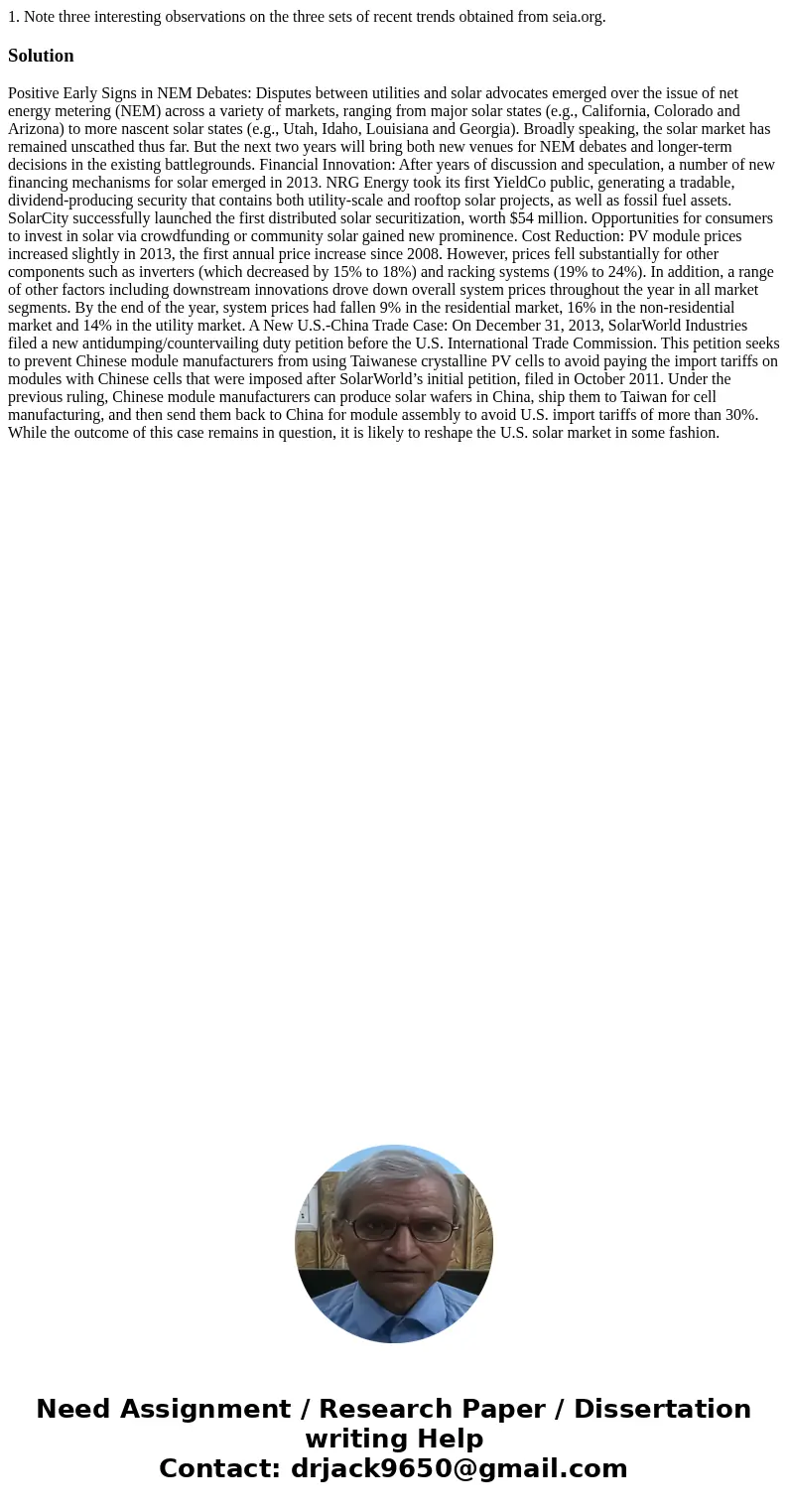1 Note three interesting observations on the three sets of r
1. Note three interesting observations on the three sets of recent trends obtained from seia.org.
Solution
Positive Early Signs in NEM Debates: Disputes between utilities and solar advocates emerged over the issue of net energy metering (NEM) across a variety of markets, ranging from major solar states (e.g., California, Colorado and Arizona) to more nascent solar states (e.g., Utah, Idaho, Louisiana and Georgia). Broadly speaking, the solar market has remained unscathed thus far. But the next two years will bring both new venues for NEM debates and longer-term decisions in the existing battlegrounds. Financial Innovation: After years of discussion and speculation, a number of new financing mechanisms for solar emerged in 2013. NRG Energy took its first YieldCo public, generating a tradable, dividend-producing security that contains both utility-scale and rooftop solar projects, as well as fossil fuel assets. SolarCity successfully launched the first distributed solar securitization, worth $54 million. Opportunities for consumers to invest in solar via crowdfunding or community solar gained new prominence. Cost Reduction: PV module prices increased slightly in 2013, the first annual price increase since 2008. However, prices fell substantially for other components such as inverters (which decreased by 15% to 18%) and racking systems (19% to 24%). In addition, a range of other factors including downstream innovations drove down overall system prices throughout the year in all market segments. By the end of the year, system prices had fallen 9% in the residential market, 16% in the non-residential market and 14% in the utility market. A New U.S.-China Trade Case: On December 31, 2013, SolarWorld Industries filed a new antidumping/countervailing duty petition before the U.S. International Trade Commission. This petition seeks to prevent Chinese module manufacturers from using Taiwanese crystalline PV cells to avoid paying the import tariffs on modules with Chinese cells that were imposed after SolarWorld’s initial petition, filed in October 2011. Under the previous ruling, Chinese module manufacturers can produce solar wafers in China, ship them to Taiwan for cell manufacturing, and then send them back to China for module assembly to avoid U.S. import tariffs of more than 30%. While the outcome of this case remains in question, it is likely to reshape the U.S. solar market in some fashion.
 Homework Sourse
Homework Sourse